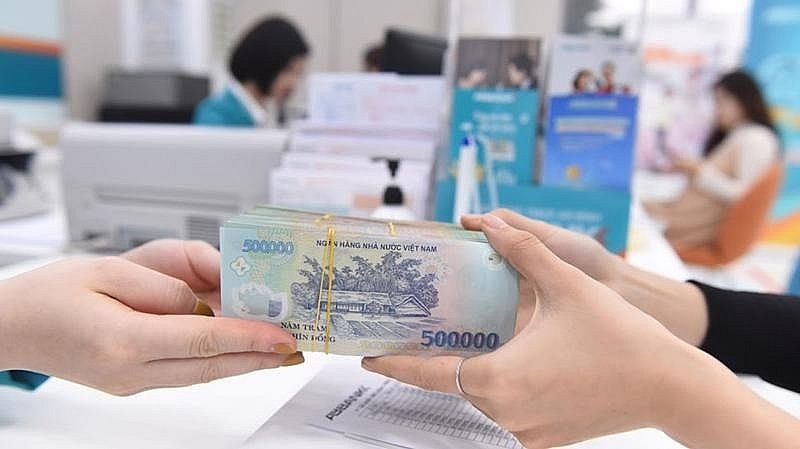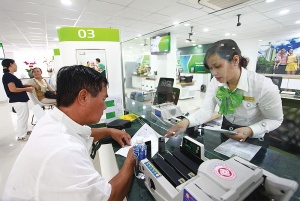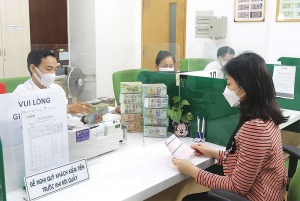Uneven credit growth registered in first eight months
According to the monthly report by the State Bank of Vietnam, as of the end of August, national credit growth reached 6.63 per cent, equivalent to nearly $604.17 million injected into the economy through the banking system. To achieve the annual growth target of 15 per cent, an additional $47.08 million in net capital can still be issued.
“The Purchasing Managers' Index has been at 52, 53, and 54 over the past three months, which is high, reflecting a strong recovery compared to the same period last year. Clearly, domestic production, consumption, and trade are recovering positively, a key factor driving the demand for credit,” said Do Bao Ngoc, deputy CEO of CSI Vietnam Construction Securities.
Explaining the slowdown in credit in July, economic expert Dr. Can Van Luc said, “This trend is merely seasonal, partly due to people's cautious sentiment during the ghost month, leading to restrained disbursements. However, this trend remains consistent with the economy's capital absorption capacity, and credit is expected to gradually recover and grow again in the coming months.”
The credit growth in August can be attributed to Vietnam's impressive economic performance in the second quarter, which created optimism throughout the market and boosted credit demand as businesses and individuals sought investment opportunities and expanded production.
 |
| Uneven credit growth was reported in the first eight months |
However, credit growth in the first eight months of the year between the country's two major economic hubs showed a significant disparity, with Hanoi’s credit growth rate nearly three times higher than that of Ho Chi Minh City.
According to the Hanoi Statistics Office, as of the end of August, the total outstanding credit from financial institutions in Hanoi reached $170.96 billion, up 1.15 per cent compared to the previous month and up 13.44 per cent compared to the end of 2023.
Meanwhile, data from the Ho Chi Minh City Statistics Office estimated that credit outstanding in Ho Chi Minh City grew by 4.5 per cent compared to the end of 2023 and by 11.4 per cent on-year. This figure is much lower than the national credit growth rate of 6.63 per cent.
The “Ho Chi Minh City economic report: Recovery and challenges,” published in August by the University of Economics Ho Chi Minh City and Ho Chi Minh City Statistical Office, pointed out that credit growth in the southern city has not met expectations due to the relatively slow recovery in domestic business investment compared to the rest of the country.
“Investment growth in the city is trending lower than the national average. In the context of rising non-performing loans and increasing lending interest rates, local businesses are likely to face considerable challenges. This is a critical issue that Ho Chi Minh City must focus on monitoring. The situation of domestic businesses in the city is something that needs to be closely observed in the second half of the year,” the report said.
 | Low lending rates may boost credit growth A slight increase in deposits recently has not affected lending rates, which banks are keeping low in hopes of facilitating the flow of credit. |
 | Major commercial banks to lead credit growth in second half of the year Major commercial banks are readying their resources to lead overall credit growth during the peak season of production, business, investment, and consumption. |
 | Hanoi's credit growth surges in first seven months Promising credit growth in Hanoi over the first seven months is expected to continue in the second half of the year as access to loans for individuals and businesses improving. |
What the stars mean:
★ Poor ★ ★ Promising ★★★ Good ★★★★ Very good ★★★★★ Exceptional
Related Contents
Latest News
More News
- Tax sector wraps up 2025 and sets priorities for next year (December 25, 2025 | 14:00)
- A tipping point for digital and hybrid wealth management in Vietnam (December 23, 2025 | 13:33)
- $250 million deal targets women-owned SMEs, sustainable agriculture (December 22, 2025 | 17:40)
- Stock market posts resilient 2025 performance (December 19, 2025 | 18:17)
- Citi Vietnam receives 2025 AmCham CSR recognition (December 19, 2025 | 16:35)
- As global green supply chain reshapes, will Vietnam be left behind? (December 19, 2025 | 08:00)
- Banks gear up for massive capital increases (December 18, 2025 | 17:04)
- Securing capital and efficiency for Vietnam’s 2026-2030 growth ambitions (December 17, 2025 | 10:00)
- Energy sector in need of blended finance mechanisms (December 17, 2025 | 09:00)
- Vietnam still has room to mobilise capital for sustainable growth (December 17, 2025 | 08:57)

 Tag:
Tag:





















 Mobile Version
Mobile Version